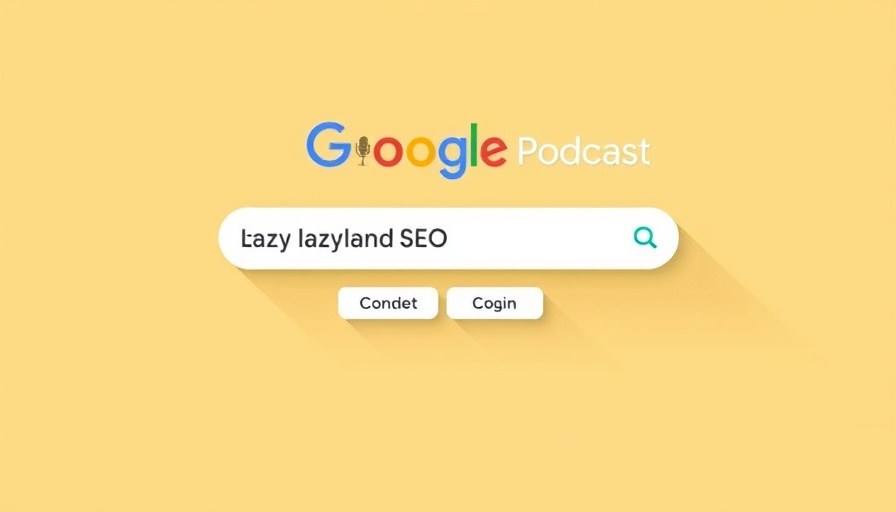
Understanding Lazy Loading and Its Impact on LCP
In the pursuit of faster web experiences, many web developers have adopted lazy loading as a go-to technique. This process allows for images and other large resources to load only when they enter the viewport or are about to become visible to the user. While lazy loading can optimize loading times under certain circumstances, experts, including Google's Martin Splitt, warn that it can significantly hinder the Largest Contentful Paint (LCP), especially when applied to crucial above-the-fold visuals.
Why LCP Matters for User Experience
Largest Contentful Paint (LCP) measures the render time of the largest content element in the initial viewport, be it an image or a block of text. A fast LCP is essential; it signals to users that they’re experiencing a responsive and fast-loading site. According to Google, a good LCP is usually around 2.5 seconds or faster.
The Risks of Default Lazy Loading
Lazy loading is beneficial in keeping page load times low, but when websites set every image as a default lazy load – particularly those visible above the fold – it effectively delays LCP. Martin Splitt noted that using default lazy loading can result in higher priority assets taking backseat positions in the loading queue. This means browsers prioritize loading scripts and styles over the main hero image, ultimately pushing the LCP later and making user experience seem hindered.
A Real-World Example of Lazy Loading Gone Wrong
To illustrate, Splitt cited the content management system (CMS) used at developers.google.com, which defaults all images to lazy loading. This approach not only delays LCP but may also lead to layout shifts if dimensions aren’t defined properly. By waiting for lower priority resources to finish loading, the browser may end up fetching the most visible image late in the cycle, diminishing user experience.
Testing and Troubleshooting Lazy Loading Effects
For business professionals and developers, verifying lazy loading implementations is crucial. Utilize tools like Search Console’s URL Inspection to review rendered HTML and ensure that above-the-fold images are loading with standard attributes rather than falling back on unconventional practices that may hinder indexing.
The Evolution of Lazy Loading Techniques
The web development landscape is evolving, prompting changes in how lazy loading is approached. Where older methods relied heavily on JavaScript to enable lazy loading, browsers nowadays support a built-in loading attribute. This advancement means developers can allow the browser to handle lazy loading autonomously, ensuring the most visible elements are prioritized without additional coding complexities.
Navigating the SEO Risks
As Splitt pointed out, it's possible that some legacy or custom lazy loading libraries may obscure image URLs in custom attributes, risking indexing by Google. The lesson here for business-oriented readers is to be cautious of library dependencies and always verify that images possess proper source attributes. This proactive approach will help maintain visibility in search results, essential for driving traffic and conversions.
Conclusion: Embracing Best Practices for Improved LCP
For marketing managers and tech-savvy leaders, understanding the implications of lazy loading on LCP is vital for optimizing user experiences. Prioritize above-the-fold content and be wary of configuring lazy loading at a default setting without due diligence. By embracing best practices and keeping abreast of SEO strategies, businesses can ensure they remain competitive in the rapidly shifting digital landscape and provide seamless web experiences. Consider reviewing your current lazy loading strategies and refine them based on these insights to enhance your website's performance.
 Add Row
Add Row  Add
Add 




Write A Comment